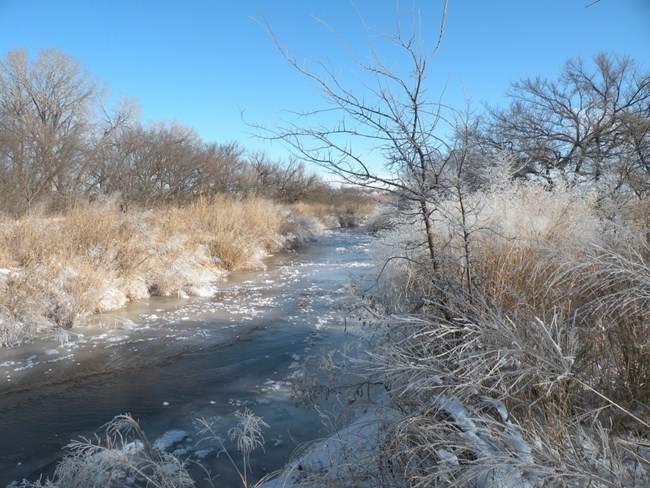Learn about NRCAs
The Natural Resource Condition Assessment (NRCA) Program provides framework, funding, and publishing support to parks to aid in the synthesis and documentation of natural resource conditions. Condition assessment reports are a tool to describe selected park resources, and record a snapshot of their current condition, identify trends, and identify potential or current threats and stressors. Understanding the condition and trend of natural resources is key for parks and NPS planners to appropriately prioritize and allocate stewardship resources.

NPS Photo.
Traditional NRCA Report: 2014
In an effort to better understand and manage the natural resources of the site, a Natural Resource Condition Assessment was completed and published in 2014. Staff from the National Park Service (NPS), Utah State University, Northern Rockies Conservation Cooperative, and University of West Florida worked together to identify the natural resources and stressors to include in this condition assessment. The final report includes 11 resource topics:
- Viewshed |
||
- Night sky |
||
- Soundscape |
||
- Air quality |
||
- Geology |
||
- Surface water quality |
||
- Groundwater |
||
- Riparian habitat |
||
- Grasslands |
||
- Exotic plants |
||
- Landbirds |
Overall, conditions at the site varied. Viewshed and night sky resources were in moderate condition, and soundscape condition was of significant concern. Human activities/development occurring nearby but outside of Historic Site boundaries (e.g., oil and gas development, wind turbines, and roads) are contributing to views, night-time light pollution, and noise that are not consistent with the park’s visitor goal of creating a reflective mood. The overall condition of air quality was also of significant concern. Geology, surface water, and groundwater resources were lacking specific data to provide insight into current condition and trend. The overall condition of riparian habitat and grasslands at the site was moderate, however, the widespread invasion of exotic plants, including Tamarisk, were of significant concern. Finally, the overall condition for landbirds was good.
For other reports and natural resource datasets visit the NPS Data Store.
Source: Data Store Collection 7765 (results presented are a subset). To search for additional information, visit the Data Store.
Last updated: February 25, 2022
